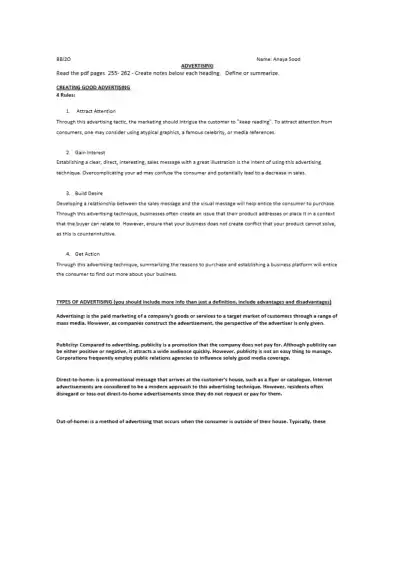Page 1

Loading page ...
Learn the 4 key rules for creating effective ads—Attract Attention, Gain Interest, Build Desire, Get Action—and explore types of advertising like publicity, direct-to-home, and paid ads, along with their pros, cons, and impact on consumers.

Loading page ...
This document has 4 pages. Sign in to access the full document!